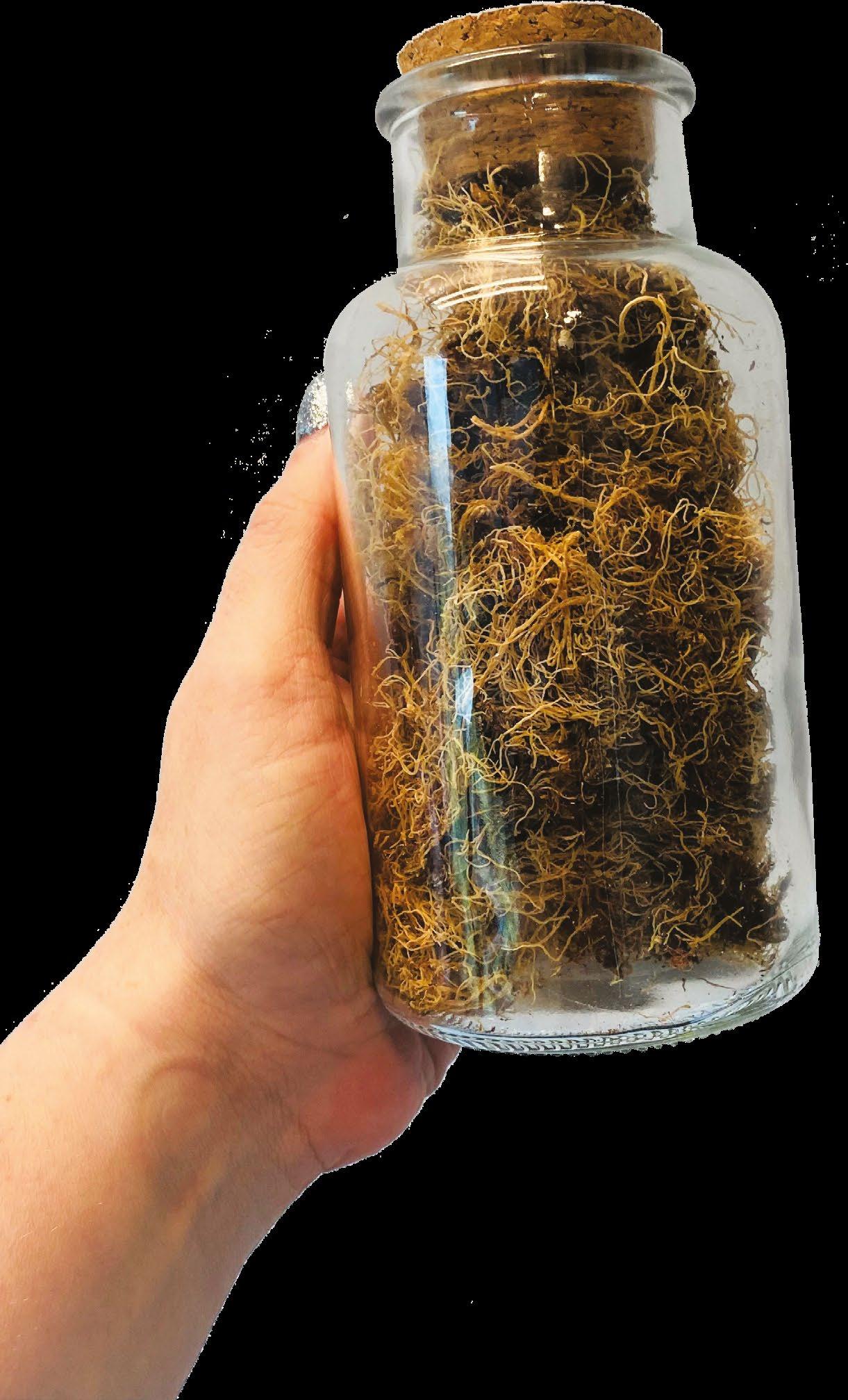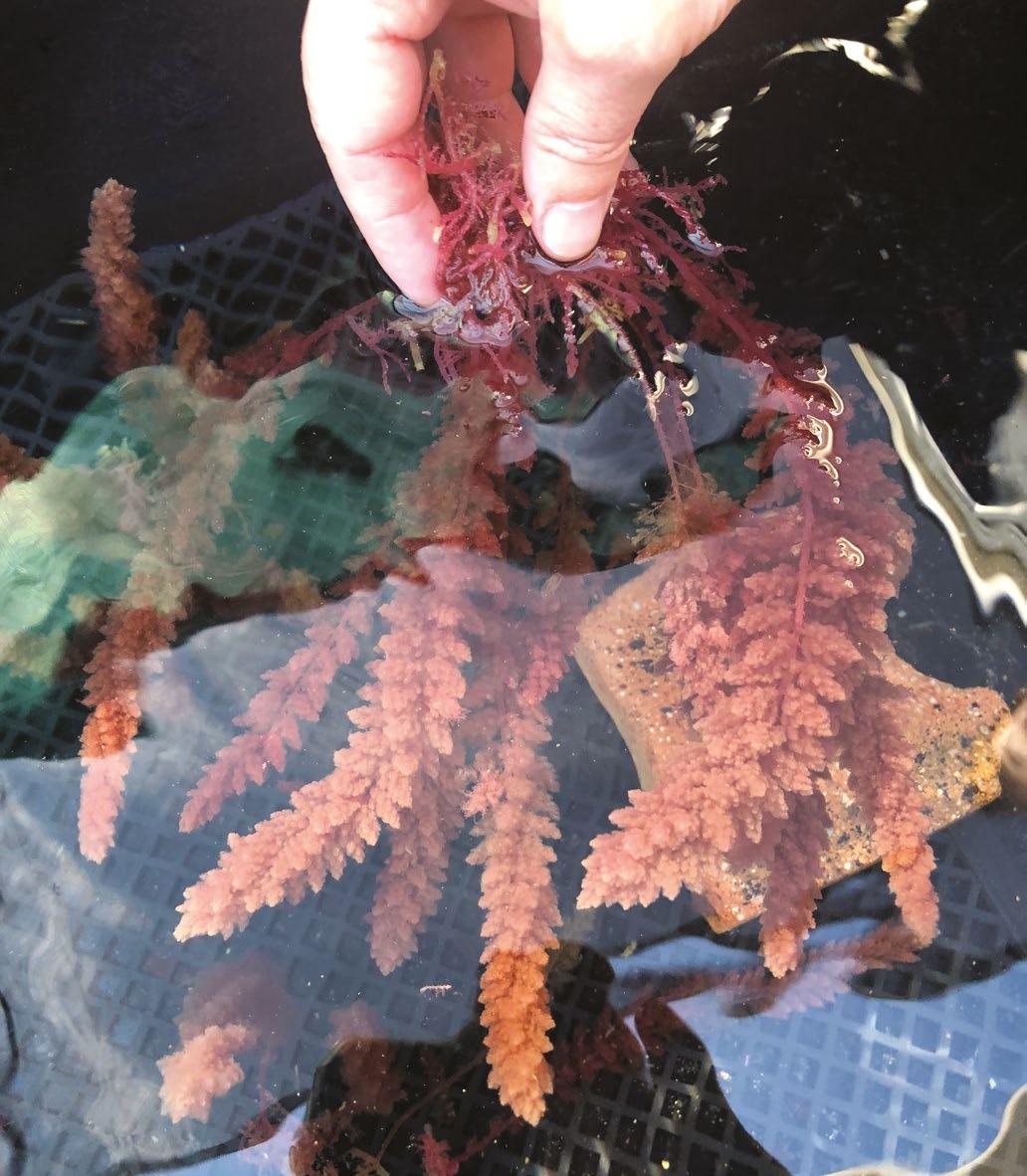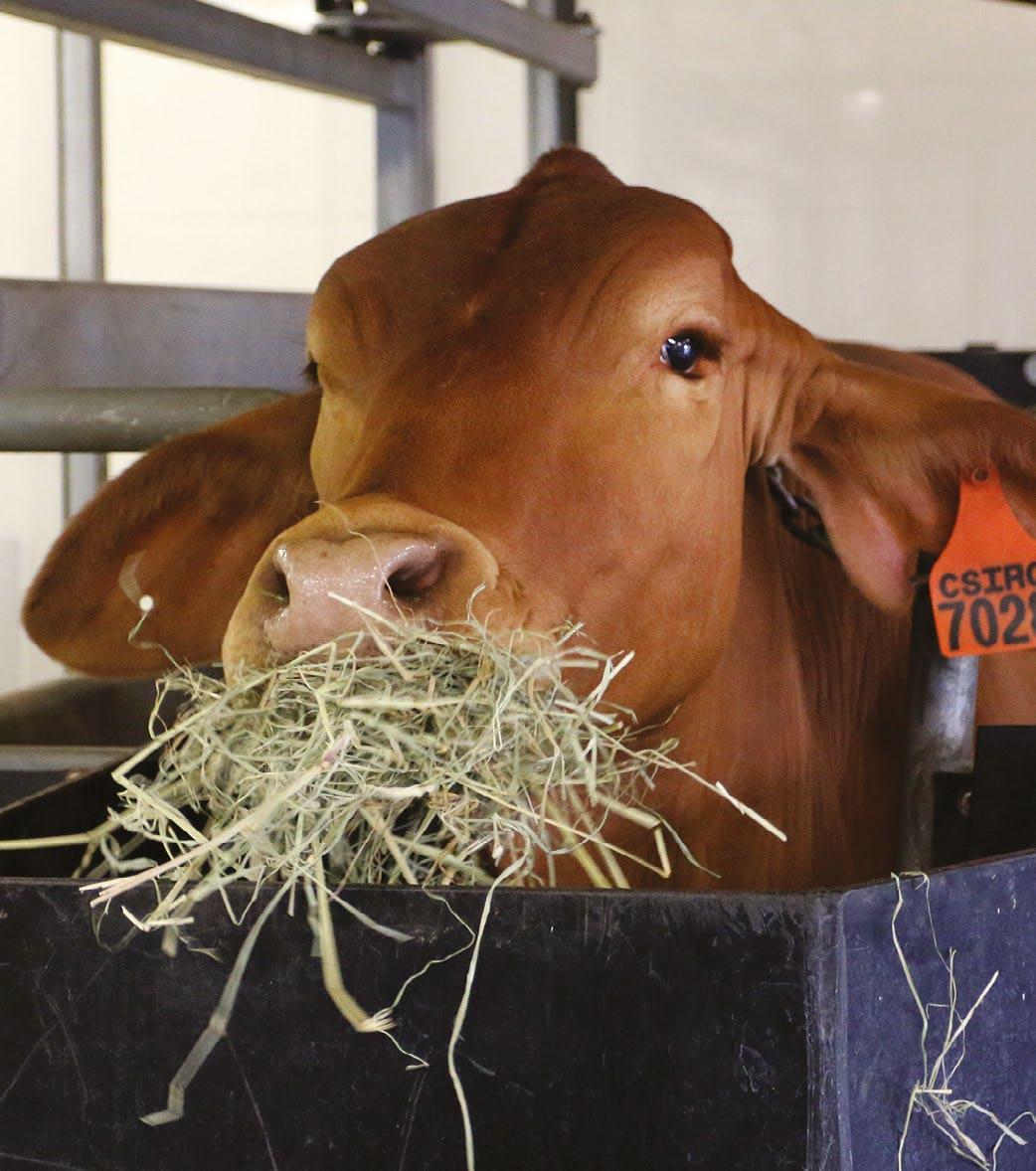
6 minute read
Can seaweed solve cattle sector’s serious GHG problem?
NEW THINKING ON BIG QUESTIONS | ENTERIC METHANE EMISSIONS
Can supplementing seaweed solve cattle sector’s serious GHG problem?
Advertisement
“The results from Asparagopsis were so incredible that they thought they had a testing error. It wasn’t until the third round of testing that they really believed what they were seeing, which is elimination in an in vitro environment.”
That’s how Eve Faulkner, Head of Marketing, Communications, and Investor Relations at FutureFeed, describes the first tests carried out to gauge the potential of different seaweeds to mitigate enteric methane emissions from cattle.
“And then when they took it into animal trials – often you find something might work in the lab, but it won’t work in an animal trial. [But] they found you needed even less seaweed to get those 98% reductions.”
Indeed, the idea of such a drastic impact to enteric methane emissions from a few grams of cattle feed supplement sounds, frankly, too good to be true. However, the development and validation of Asparagopsis as a methane-reducing feed additive has involved some of the most serious animal science researchers from the university and public sectors and has been documented in peer reviewed articles.
As Faulkner explains, it began with the National Methane Avoidance Program, a collaboration between CSIRO (Australia’s national science agency), Meat and
Livestock Australia (an association of red meat producers), and James Cook University. Later, the University of California Davis was involved in confirming the methane reduction potential of Asparagopsis. In August 2020, CSIRO set up a company, FutureFeed, to help bring this solution from the research world to the field. FutureFeed holds the patent rights to Asparagopsis as a feed additive to reduce methane production and to increase productivity. It licenses “impact partners” around the world to grow the seaweed and sell it to feedlots. This summer saw a major step forward for the technology, as the first FutureFeed-licensed Asparagopsis reached commercially-grown cattle. CH4 Global, the impact partner which grew and sold this Asparagopsis, is constructing facilities in Australia and New Zealand, both of which will be operational by 2023.
Challenges of certification, free-range feeding, and more
Meanwhile, FutureFeed also works on promoting Asparagopsis use and furthering the science behind it, work which can be divided into four key areas: research and development, including animal science; certification and standards; regulation, in which it works closely with its impact partners; and education, or making the wider market aware of the solution. “We recognize that it takes more than just licenses for a new industry to flourish,” notes Faulkner.
Specifically, one of the biggest priorities for FutureFeed right now is to establish its own certification system to “build trust and credibility in product claims”. In other words, if someone is going to pay more for beef or milk from low-methane cattle fed Aspargopsis, or if carbon credits are eventually going to be sold based on the use of Asparagopsis to prevent greenhouse gas emissions from cattle herds, it is essential to establish which animals are receiving an Asparagopsis supplement, and how much. Faulkner describes this as a framework “backed by a digital traceability platform that feeds into blockchain technology. That is about tracking the Asparagopsis from its very inception through to the product claim, so you can have confidence in the reductions… and it helps us track that the process that has been followed fits in with the requirements of the science, so that they fed the right amount of seaweed to make that methane reduction claim.” This project is still in the proof-of-concept stage at the moment, she says.
Of course, the authorisation to make such a claim about a feed supplement – or indeed to use it at all – is something that “varies [from] market to market, and it varies [from] delivery method to delivery method, and it varies [from] claim to claim,” to cite Faulkner. “So, you can use freeze-dried Asparagopsis in Australia today for methane reduction, and there is approval in the state of California… and in the EU it can be fed — it’s on the approved ingredients list — but
Continued on page 28
NEW THINKING ON BIG QUESTIONS | ENTERIC METHANE EMISSIONS
Continued from page 26
you can’t make a methane reduction claim. So it’s at different stages in different markets.” Helping build up the evidence necessary for full approval in the major cattle producing countries is another of FutureFeed’s priorities, she states.
Another challenge is how to deliver the Asparagopsis supplement to cattle who are pastured, rather than on a feedlot. Indeed, this issue is not unique to FutureFeed, but is one which anyone hoping to mitigate enteric methane production with a feed supplement must face: grazing ruminants produce more methane per animal than those fed concentrates, but it is much easier to supplement animals who feed at a trough than those who feed themselves on a pasture. “There’s an industry-wide push on [how to deliver] to grazing systems,” acknowledges Faulkner. “When you’re in a grazing environment, it’s not only how do you deliver it, which is one piece of the puzzle, but [also] how do you accurately account for reductions on a herd basis rather than on an individual basis. It’s a two-fold opportunity to solve.”
Finally, of course, there are the challenges common to any new technology: scaling up both awareness and production of the solution so that it can have the greatest reach possible. On the production side, FutureFeed is constantly looking to grow its network of licensees. Faulkner says the company looks for “experienced aquaculture operators who might also already be working in seaweed or want to complement their existing aquaculture operations…it’s about looking for licensees who can commit to delivering at the quality standards that our license requires, and a consistent volume of product.”
Meanwhile, on the communications side, the company is constantly looking for creative ways to help get the word out that a highly effective solution for enteric methane mitigation has been identified, and to mobilise support and resources for it to be deployed widely and quickly. Faulkner cites a number of channels they are employing to try and reach producers, consumers, retailers, and governments, from presentations and speaking engagements, to participation in an exhibit at the Smithsonian on the future of food, to an online cooking class where a celebrity chef cooked a lowmethane steak from one of the company’s trials.
There is an urgency to this work if the world hopes to keep warming below 2° C. In the words of CH4 Global spokesperson Rowena Pullan, “more than 1.5 billion cattle alone emit the equivalent of about 13 gigatons of CO2 each year, which is more than the entire country of China.
“Methane is a massive climate challenge — and an opportunity. A challenge, because it has more than 80 times more climate heating power than CO2 in the short term. An opportunity because if we can reduce methane emissions, we can buy time for the world to wean itself of fossil fuels.” By Shannon Behary, senior editor

ROWENA PULLAN, CH4 GLOBAL









